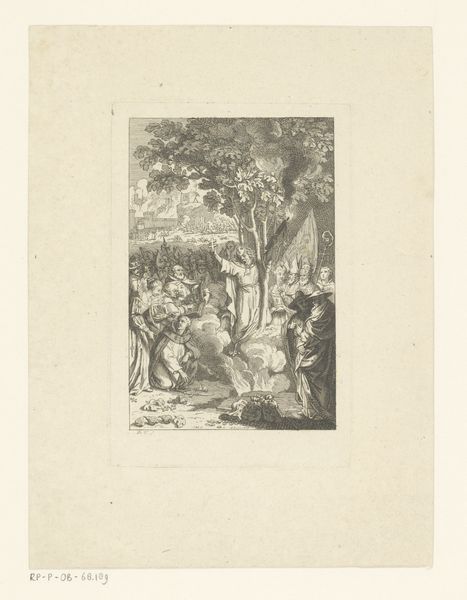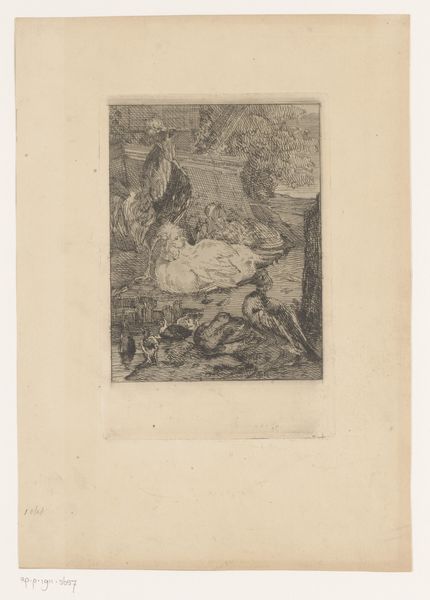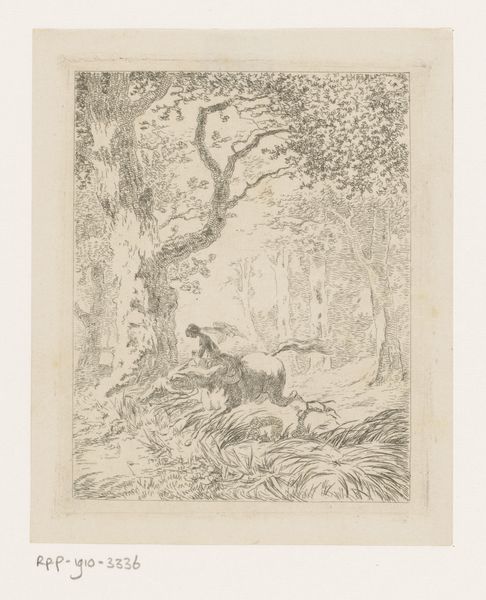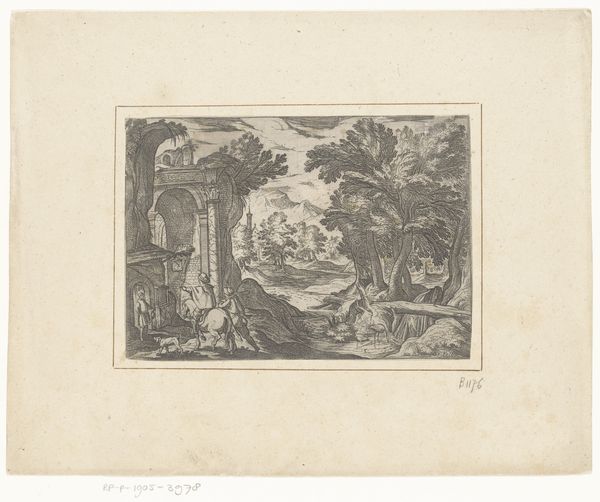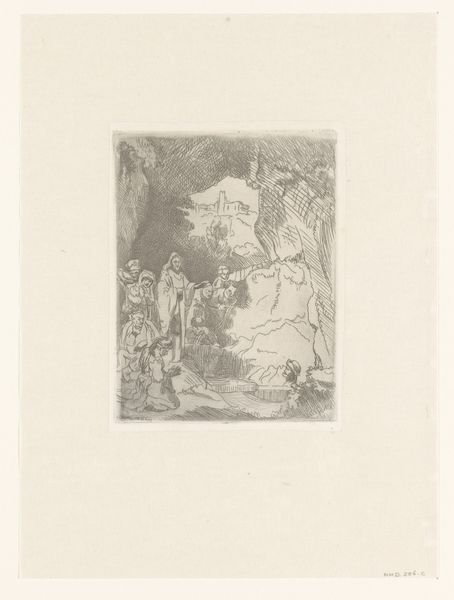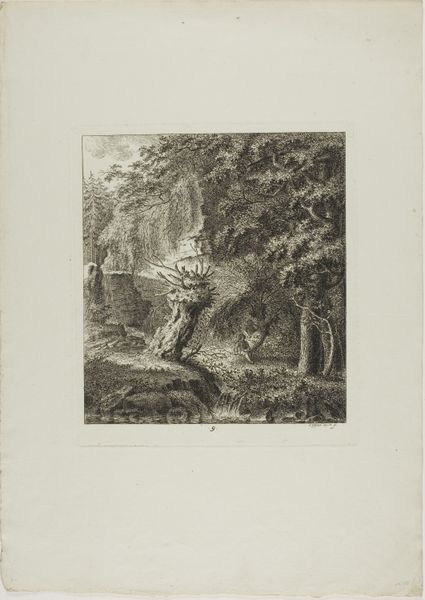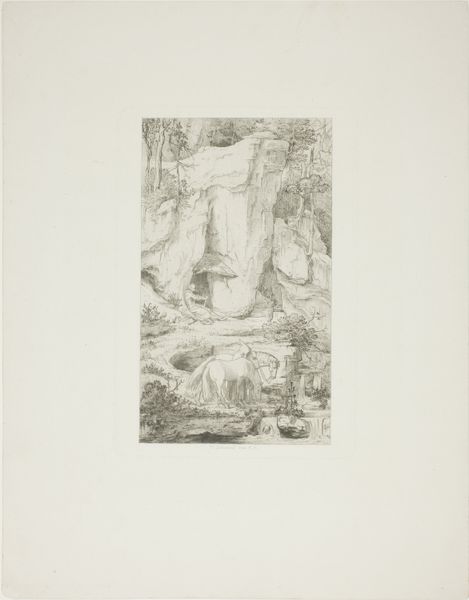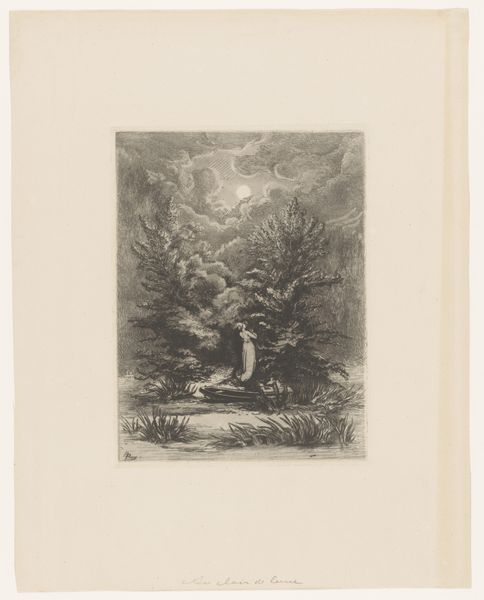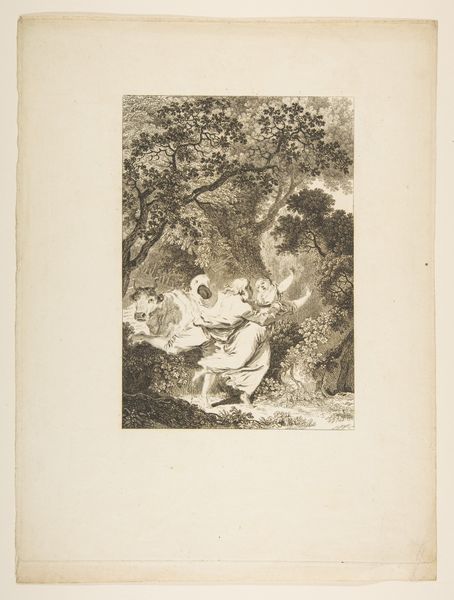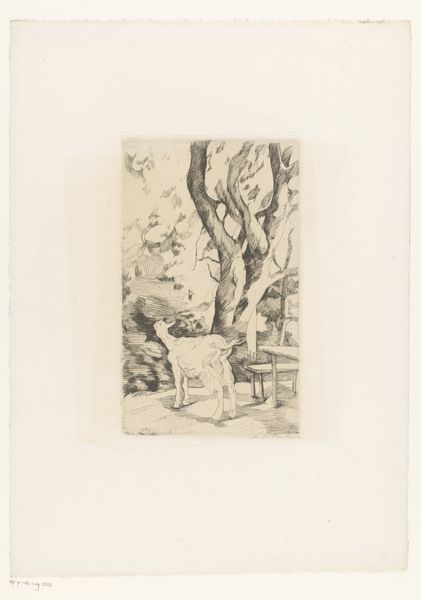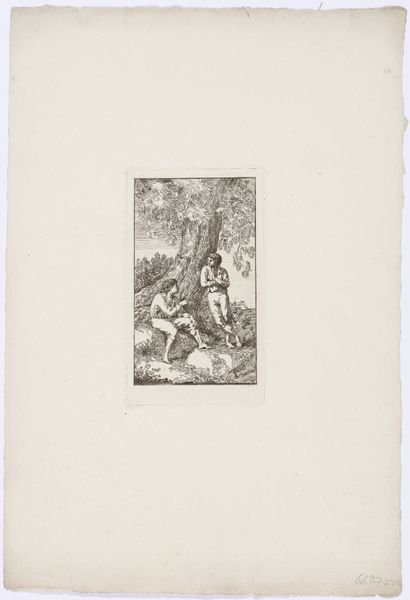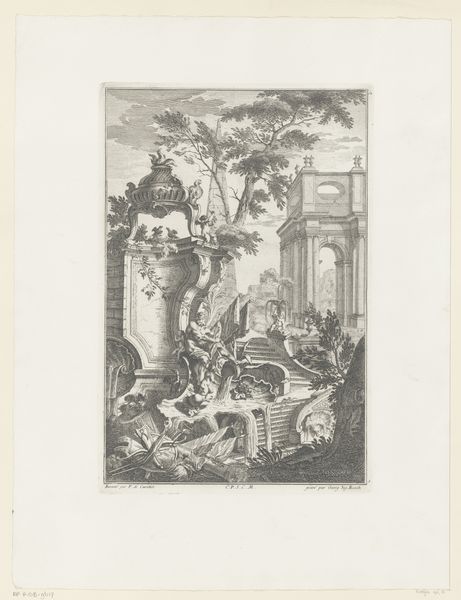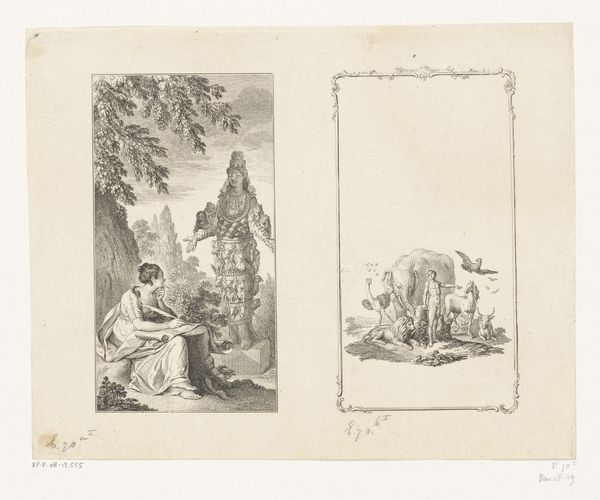
drawing, print, etching, paper
#
drawing
#
narrative-art
# print
#
etching
#
landscape
#
paper
#
romanticism
Dimensions: 245 × 186 mm (image); 266 × 217 mm (plate); 440 × 303 mm (sheet)
Copyright: Public Domain
Curator: We're now looking at "A Musician with a Hermit," an etching on paper by Moritz von Schwind. Editor: It's a rather idyllic scene, almost theatrical in its staging. The soft hatching creates a sense of depth, but the details remain sharp. Curator: Indeed. Von Schwind was a prominent figure in the Romantic movement, which often looked to the past, myth, and folklore for inspiration. This work certainly reflects that interest, doesn't it? The hermit represents withdrawal from society and embracing a more spiritual existence. We see these characters as they meet in nature, possibly signifying the value in exploring themes of community with others while simultaneously finding inner-strength by oneself. Editor: Note how the hermit's placement on those stairs invites our gaze. Those lines subtly lead to the musician who acts as the subject of interest in the frame, who appears to be playing for his lonesome, yet both are set amongst a rich interplay of nature. The contrasts in tonality bring an equilibrium to this image, which might feel as though it's off balance if any elements of contrast were out of place. Curator: Absolutely. The setting itself emphasizes this connection. The Romantic era was all about evoking emotions. How do you interpret the effect this backdrop had for the targeted audience, given it's use of etching? Editor: Given the delicate hatching of the print, it encourages closer inspection. It almost pulls the viewer into the scene. It reflects upon an accessible world, making it easier to see one's self placed in the subject of interest's location, making their encounter all the more magical and believable. Curator: Precisely. The choice of print allows for wider circulation. This meant his vision of the human encounter had greater potential to reach audiences throughout central Europe. Romanticism aimed to critique modernity; Von Schwind makes a clear, perhaps deliberate, approach to capture the movement. Editor: A successful one at that. The formal considerations alone contribute so heavily to the content, making both the intention and goal of Von Schwind incredibly transparent, not to mention timeless. Curator: It’s fascinating how these seemingly disparate elements combine to create a potent, symbolic image. Thanks for sharing your perspective on this!
Comments
No comments
Be the first to comment and join the conversation on the ultimate creative platform.
